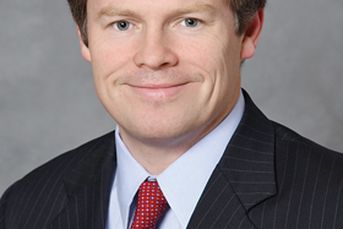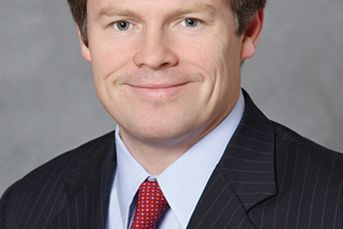JPMorgan’s David Kelly: Three key ‘unresolved’ questions about to be answered

Last week saw the sixth consecutive weekly loss for the stock market, with the S&P500 now down 6.8% from its late-April peak.
Last week saw the sixth consecutive weekly loss for the stock market, with the S&P500 now down 6.8% from its late-April peak. The main concern has been about the economy as a distinctly sub-par 1.8% real GDP growth number for the first quarter has been followed by a string of negative readings on the second. If anything, last week’s economic numbers were mildly encouraging with a continued improvement in household net worth and very strong April exports. However, all-in-all, the economy remains very soggy.
This week will provide a barrage of economic numbers but they will still serve as a prelude to more important questions to be answered over the next two months. Producer Prices on Tuesday and Consumer Prices on Wednesday should show milder inflation readings than in recent months as both gasoline and farm output prices moderated. Retail Sales will be watched closely as analysts refine estimates of second-quarter consumer spending, while Manufacturing and Trade Inventories, also due out on Tuesday, will be examined for signs of the Japanese disaster effect which were evident in last week’s trade report.
Numbers on Industrial Production and Housing Starts should both register small gains for May, but won’t change anyone’s mind about the weakness of these sectors. More interesting will be the Empire State and Philly Fed surveys of manufacturing activity in early June, due out on Wednesday and Thursday respectively. Initial Unemployment Claims are likely to remain above 400,000 for the latest week while the University of Michigan Consumer Sentiment survey should see a sharp relapse following a stronger-than-expected May reading.
However, despite all this information, some key issues will remain unresolved. Among these are:
(1) What does the economic slowdown imply for the upcoming earnings season?
(2) What are the prospects for stronger growth in the third quarter?
(3) Will the Fed propose further stimulus at their meeting next week?
On the first issue, the evidence looks positive, with analysts still generally revising estimates up (according to Zacks) and now projecting S&P500 operating earnings to come in at $23.99 for 2011Q2 compared to $22.58 for 2011Q1 (according to Standard and Poors). While some of this gain would be seasonal, it would put earnings very close to their all-time high of $24.06 set four years ago and would confirm the ability of earnings to continue to grow in a weak economic climate.
On the second issue, the jury is still out. However, a relatively weak U.S. dollar should boost exports, while a bounce-back in auto production should help manufacturing output. Home-building activity and auto sales could also strengthen as consumers have made progress in repairing their balance sheets while investment spending on equipment should still benefit from the tax breaks agreed to last December. While the current soft patch remains worrying, the odds remain in favor of stronger growth in the second half of the year.
Finally, attention next week will be focused on the June 21-22 FOMC meeting. Some investors were apparently disappointed that Ben Bernanke gave no hint of a “QE3” in his speech in Atlanta last Tuesday. However, the reality is that the case for further large-scale asset purchases is very difficult. For one thing, recent data clearly show a higher underlying inflation rate than was the case last August when the Fed first signaled “QE2”. In addition, other monetary authorities around the world are growing more hawkish, as evidenced last week by Jean-Claude Trichet’s clear indication that the ECB would raise its refi rate for the second time this year in July.
A third reason to hesitate, however, and one which has received less attention, is the degree to which QE2 has extended the Federal Reserve’s own balance sheet into uncharted territory. The total assets of the Federal Reserve now amount to $2.8 trillion compared to just under $900 billion four years ago, and the interest on these assets (compared to the paltry rates paid on bank reserves and non-existent interest on currency) will allow the Fed to earn a profit of close to $90 billion in the current fiscal year compared to $32 billion in fiscal 2007. This is a welcome boost to the federal budget, since the Treasury actually receives these profits as a transfer from the Federal Reserve.
However, this implies that the Fed has actually taken on significant interest rate risk itself. So far, the banking system has been content to hold huge excess reserves at the Fed rather than expanding the money supply dramatically, and Fed officials have repeatedly pointed out that they can maintain this position by raising the interest rate the Fed pays on reserves. However, a general increase in interest rates caused by both the Fed itself and an improving economy, could, at an extreme, leave the Fed paying more in interest on reserves than it is receiving on its huge portfolio of longer-term bonds. This clearly would leave the central bank in a strange place, and although there should be ways to deal with even this eventuality, many Fed officials will reasonably feel that there should be a limit to how far out they want to push the boat. The bottom line is that for many both inside and outside the Federal Reserve, QE3 would be a very uncomfortable decision to make.
The next few months will provide some clarity on these issues along with the issue of raising the debt ceiling and the pace of economic growth outside the United States. In the meantime, markets could remain choppy even though the most likely scenario of solid profits, stronger growth and less Fed action remains fundamentally positive for stocks and negative for bonds.
**** ***** *****
Tuesday, June 14th
Producer Price Index Forecast Last
Overall, %ch 0.3% 0.8%
Ex-Food and Energy, %ch 0.1% 0.3%
Retail Sales Forecast Last
Overall, %ch – 0.6% 0.6%
Ex-auto, %ch 0.3% 0.6%
Wednesday, June 15th
Consumer Price Index Forecast Last
Overall, %ch 0.2% 0.4%
Ex-Food and Energy, %ch 0.2% 0.2%
Empire State Mfg. Survey Forecast Last
Index Level 8.2 11.9
Industrial Production Forecast Last
Production, %ch 0.2% 0.0%
Capacity Utilization, % 77.0% 76.9%
Thursday, June 16th
Housing Starts Forecast Last
Starts, mils, ann rate 0.533 0.523
Permits, mils, ann rate 0.553 0.551
Jobless Claims Forecast Last
Initial Claims, 000’s 422 427
Continued Claims, 000’s 3,650 3,676
Philadelphia Fed Mfg. Survey Forecast Last
Index Level 4.8 3.9
Friday, June 17th
Consumer Sentiment Prelim Last
Index Level 67.0 74.3
Learn more about reprints and licensing for this article.





